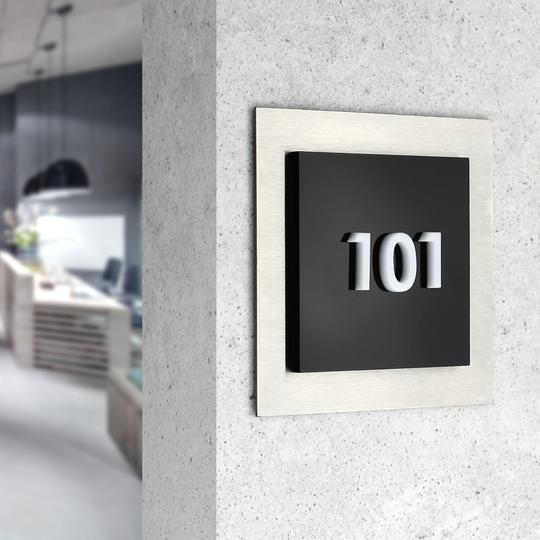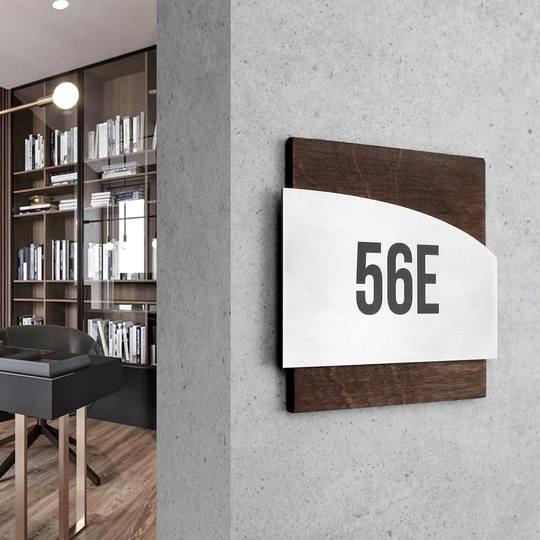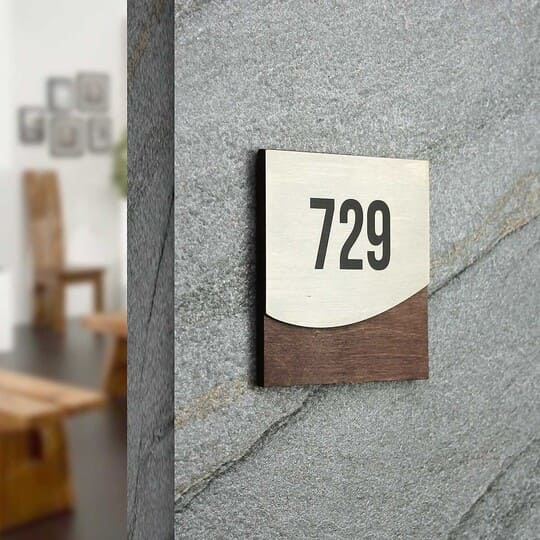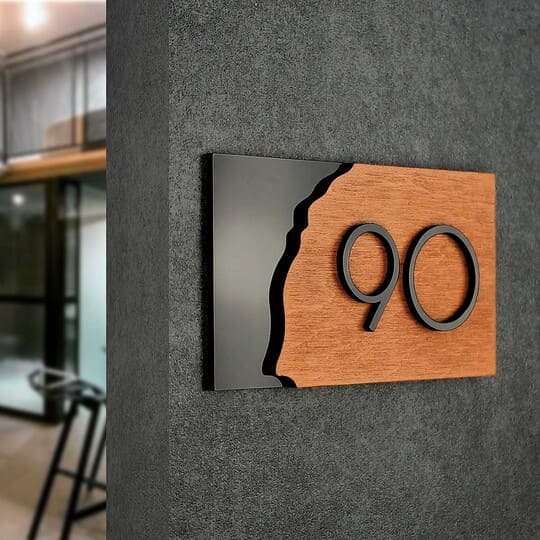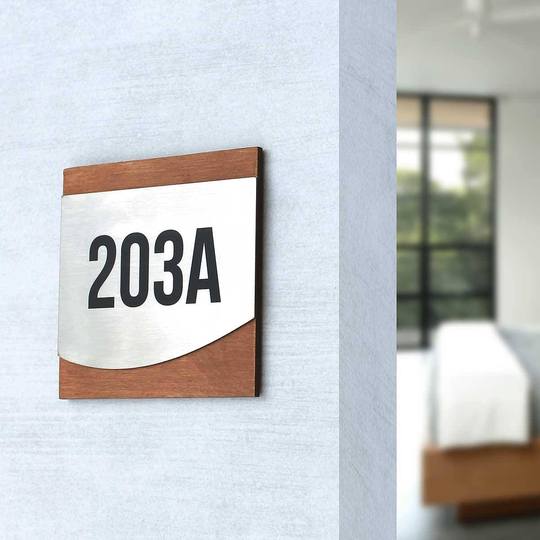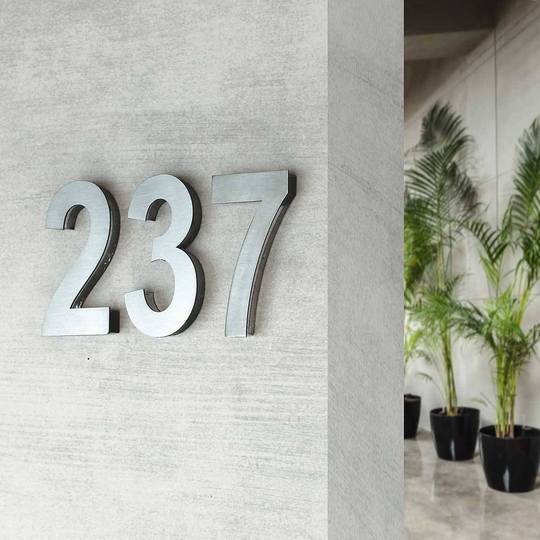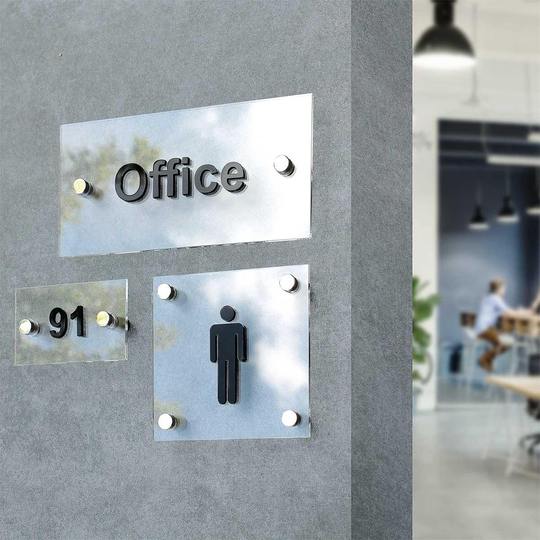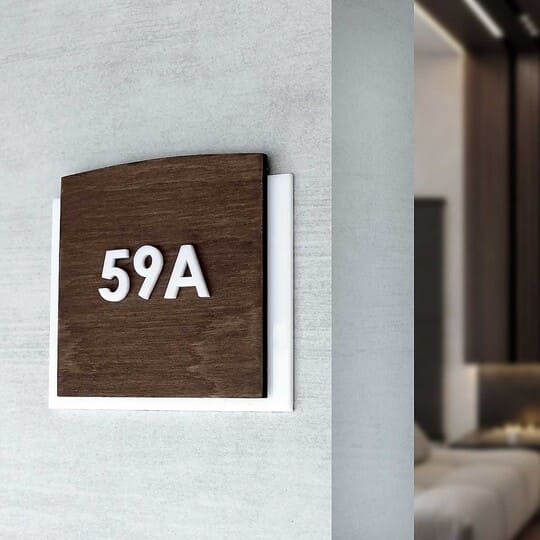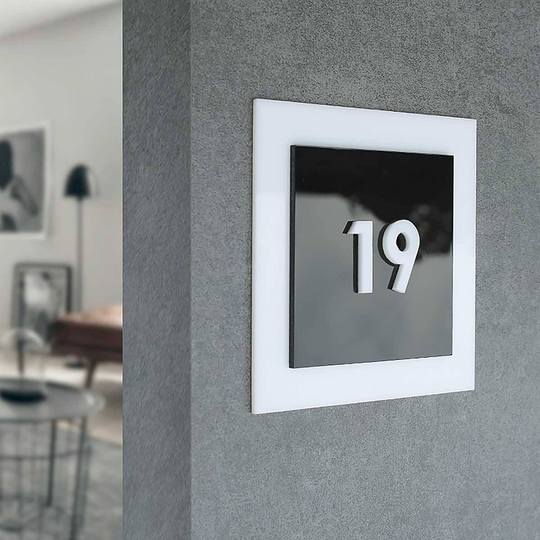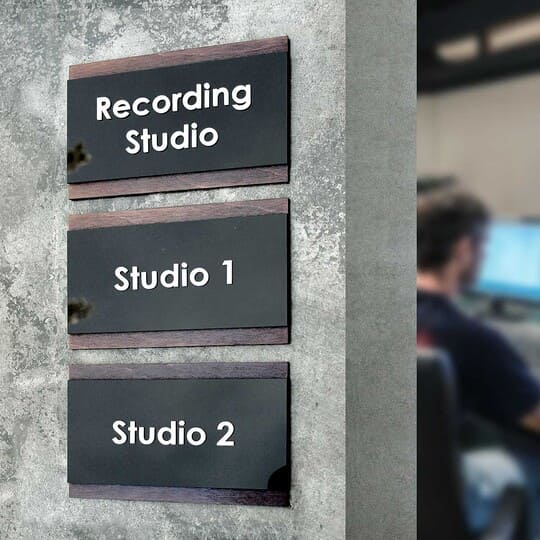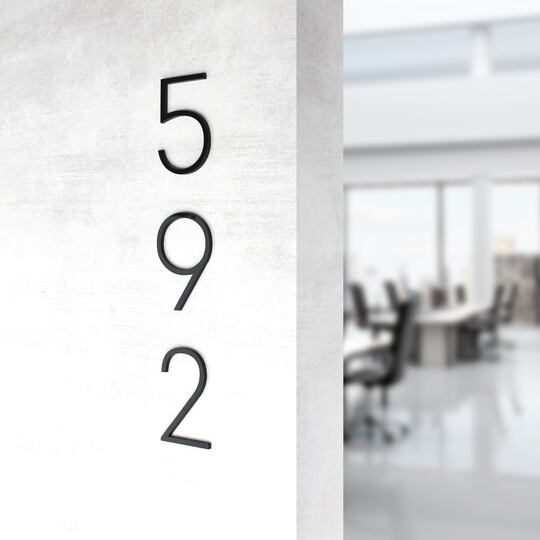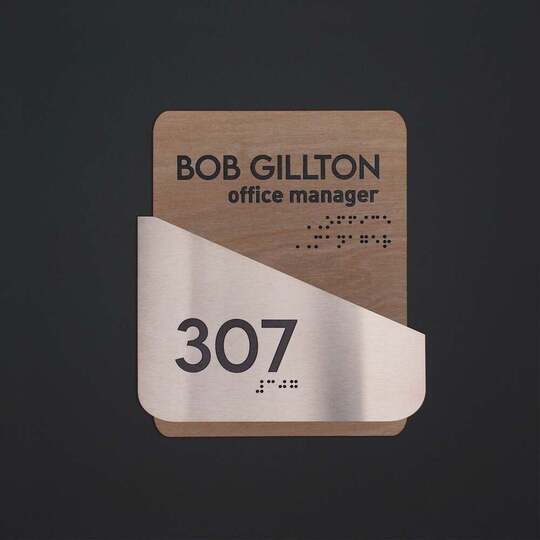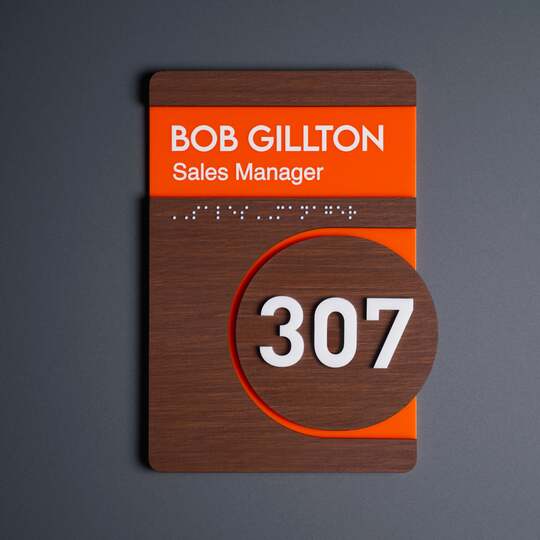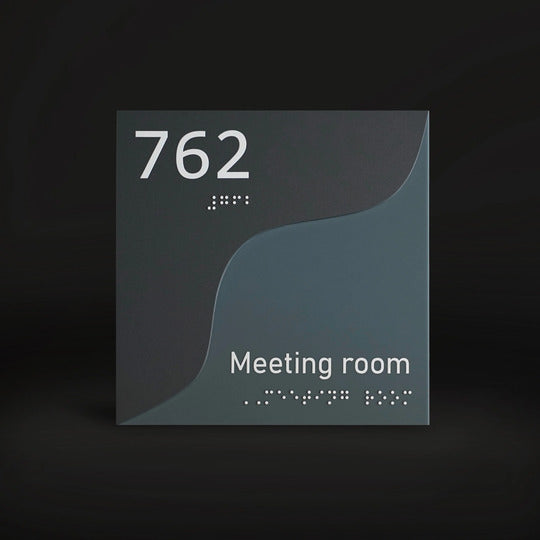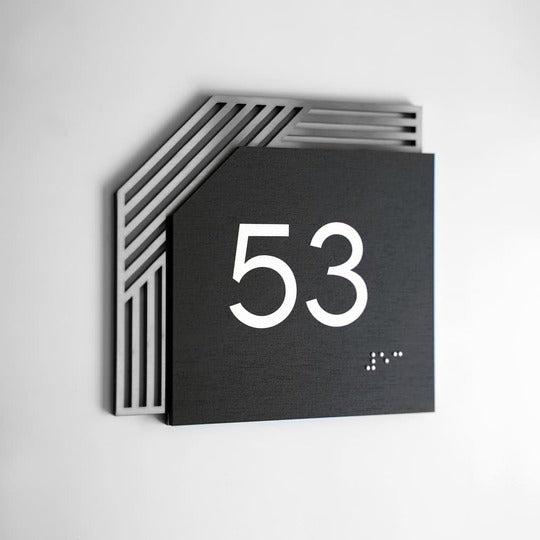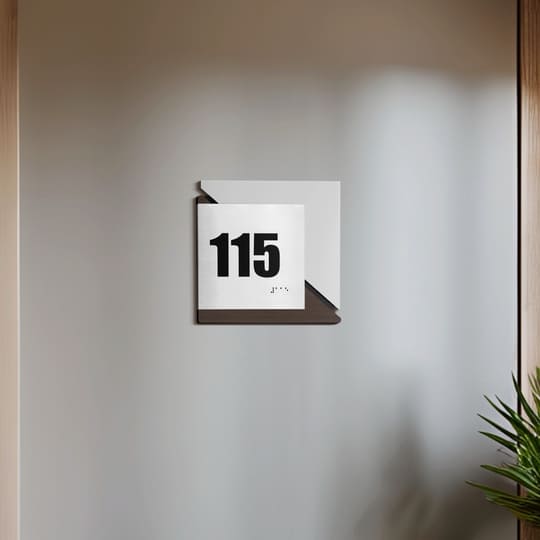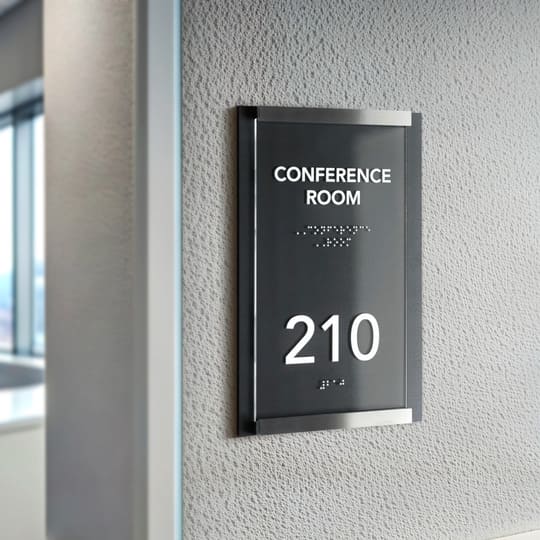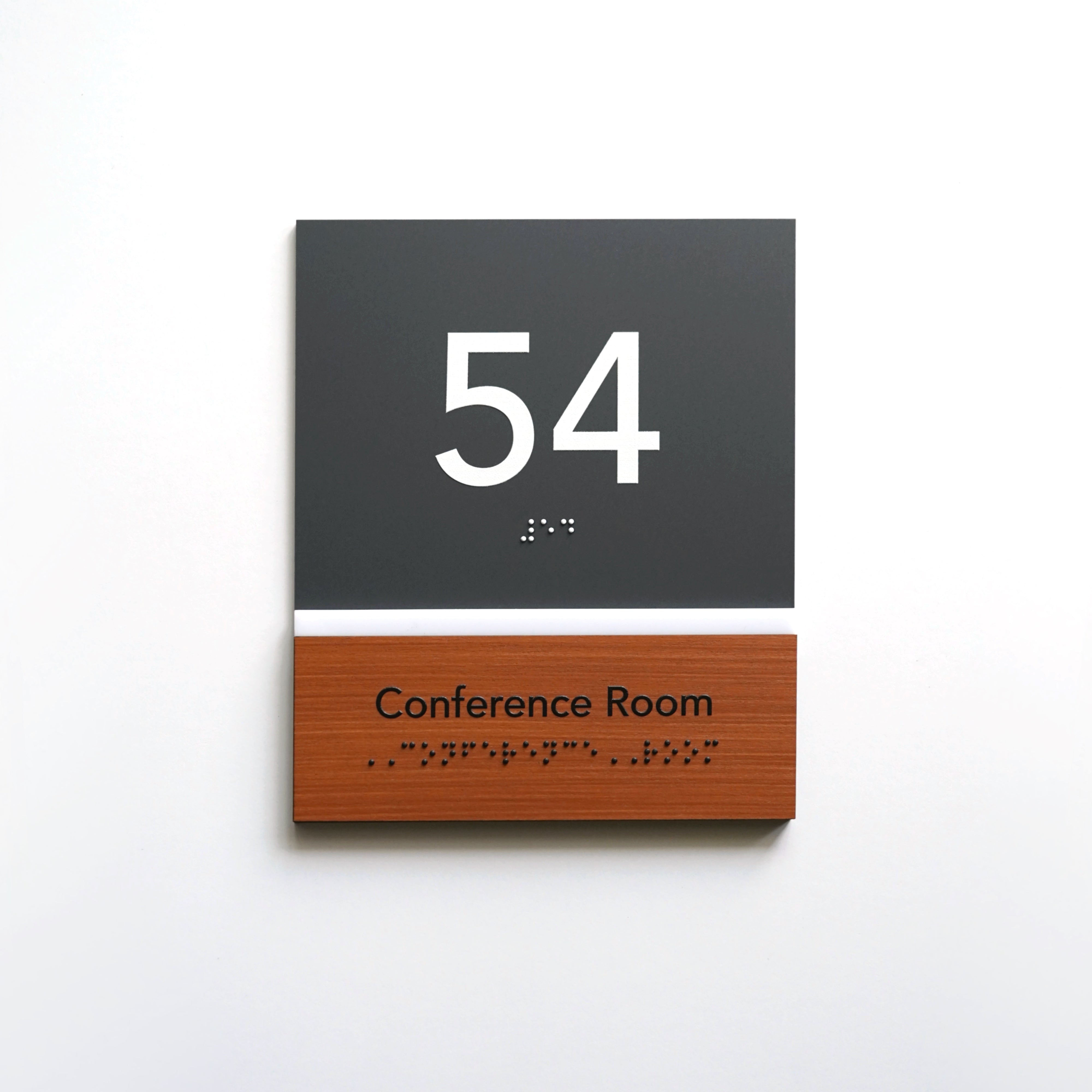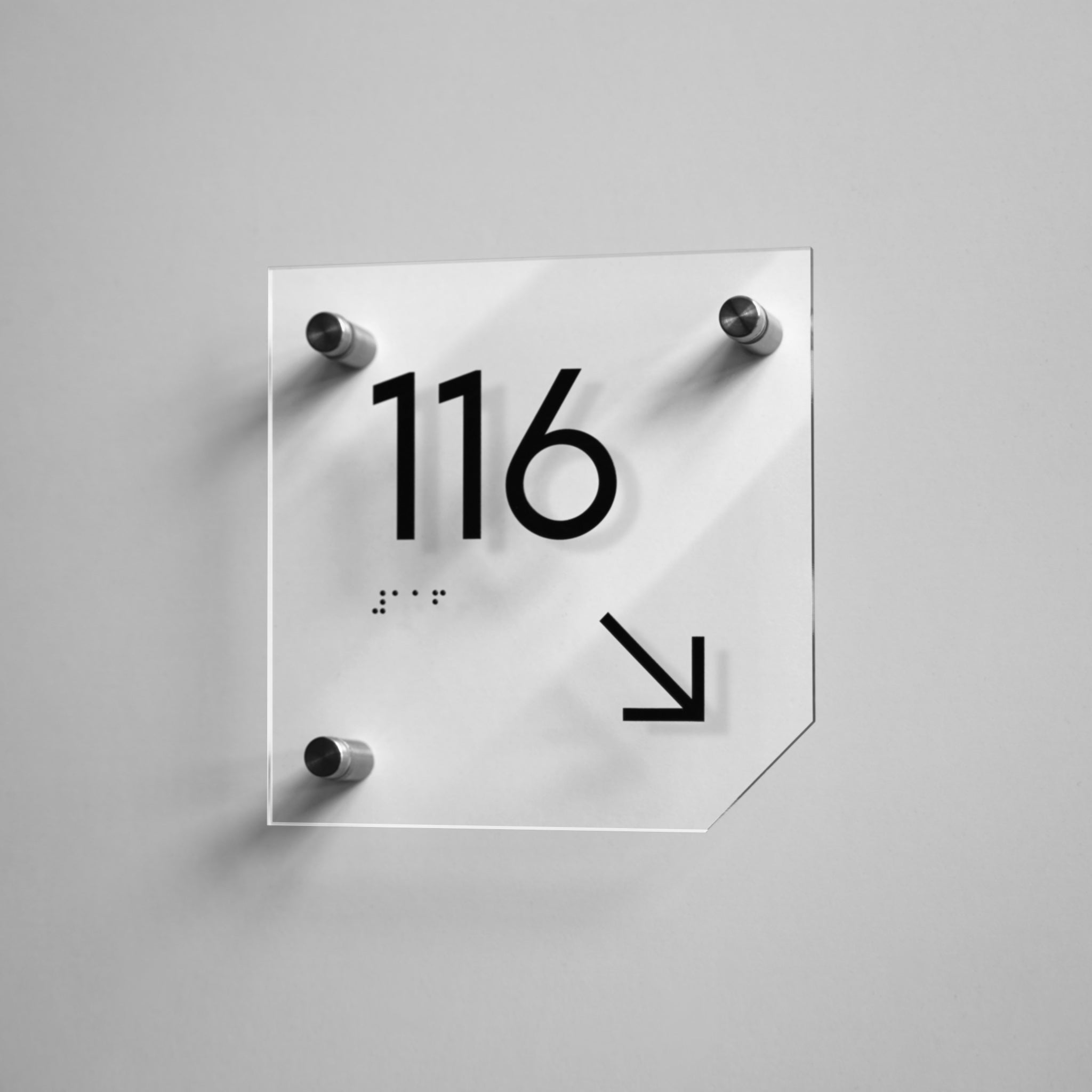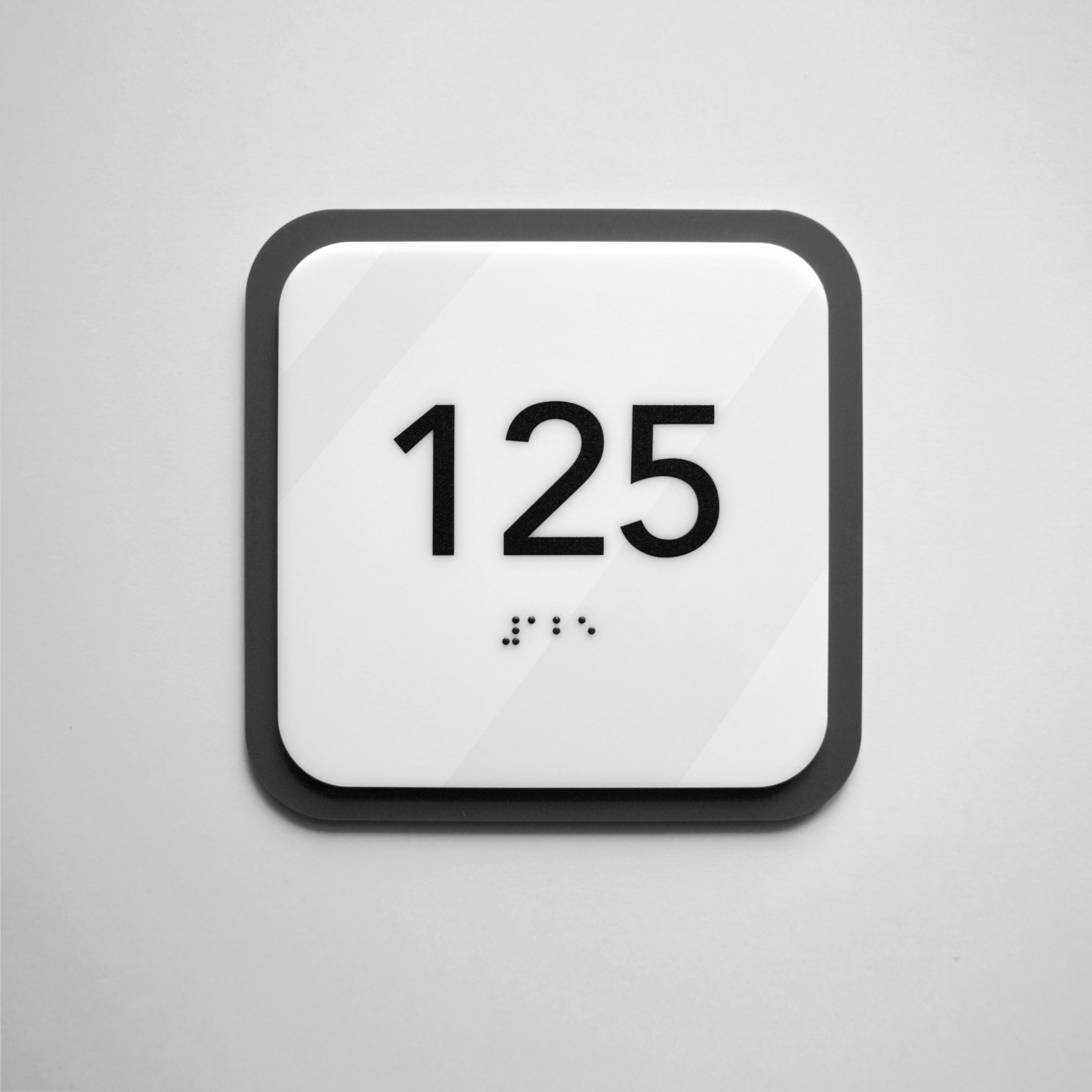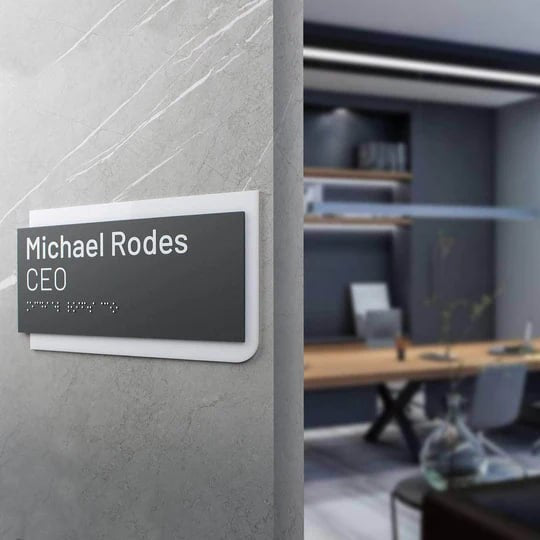
Hotel room numbers: how to ensure visibility and ease of use
Choosing stylish signage for hotels is just the first step. For signage to truly be effective, everything must be thoughtfully considered — from design to installation. It's best when this is handled by a professional contractor who understands both aesthetics and functionality. In a hotel environment, room numbers serve an important role — not only as part of the interior style, but also as a wayfinding element that directly affects guest satisfaction and even brand identity.
A well-organized installation helps make interior wayfinding signs, ensures convenient placement, and highlights the architectural features of the space. Whether it’s a boutique hotel or a serviced apartment complex, well-installed, modern door numbers always enhance both image and functionality.
In this article, we’ll explore the key principles of installation that make room signage not just decorative, but truly functional.

Signage installation as part of the guest experience
In the hotel industry, room numbers on doors are part of the visual appeal, cohesive design, and the logic behind how guests navigate the space.
A properly installed sign is one that guests notice as they approach the door. There’s no need to scan the corridor or hesitate — the sign is intuitively visible, easy to read, and instantly clear. That’s the essence of effective signage: it doesn’t distract or raise unnecessary questions — it naturally guides guests through the space. At the same time, the room number appearance should harmonize with the overall interior, support the ambiance of the establishment, and reflect its level of quality. These signs are not just navigational aids — they’re a key part of the hospitality experience, shaping first impressions and subtly reinforcing the brand.
To make this vision a reality, quality mounting is essential. Even the best composition won’t be effective if the plate hangs crookedly or leaves marks on the door.
That’s why Bsign offers two thoughtfully designed installation options that combine aesthetics, functionality, and respect for materials:
-
• Permanent acrylic tape — a reliable, quick solution that requires no drilling. Ideal for lightweight and modern room number signs.
-
• Metal standoff mounts — used for custom-designed signs with complex shapes or made from heavier materials. They offer a stylish look and add depth.
Both options leave no marks on surfaces and preserve the aesthetic of durable materials like wood, acrylic, or stainless steel.

Common installation mistakes: what to avoid
Too often, installation is treated as an "afterthought". The result is always the same — disrupted wayfinding logic, compromised aesthetics, and guests inconvenience.
-
• Installing the sign too high or too low
When a room number is placed above or below the recommended height, it can fall outside the natural line of sight. Guests are forced to bend down or crane their necks to see the numbers, which negatively impacts their overall impression of the space. -
• Signs mounted at an angle or slanted
Even slight deviations from a horizontal alignment disrupt perception — guests subconsciously notice this and interpret it as carelessness. A tilted plate can create a sense of visual clutter, especially when multiple signs are placed close together in a hallway. -
• Weak or temporary adhesives
Using cheap adhesives or low-quality double-sided tape can result in signs falling off within days. Moreover, these methods often leave marks on doors or walls, damaging the finish. -
• Overly decorative fonts that reduce legibility from a distance
Boards are, first and foremost, tools for orientation. If the font looks "nice" but can only be read from one meter away, it’s not serving its purpose. In hotel corridors, it’s important that numbers are legible from several meters away.

Optimal signage placement height: guidelines that work
The key goal is to ensure that plates are placed at a level that is easy to see and read. Functional signs are recommended to be installed at a height of 55–63 inches (140–160 cm) from the floor — roughly at adult eye level. This height ensures optimal sign visibility regardless of lighting conditions or door size. It allows information to be read quickly without needing to shift one’s body or gaze, which is especially important in dynamic environments like hotels or apartments, where people are often on the move.
Moreover, this height is universally effective — it works equally well in spacious hotel hallways and more compact lobbies or private buildings. It’s a standard that performs consistently across all building types, from classic boutique hotels to modern business centers.
Location matters: where door number signs should be placed in hotels
When it comes to placing door signs, the default solution is often to stick them in the center. But this approach overlooks the unique features of each building. There’s no one-size-fits-all answer — effective placement depends on the architecture, lighting, corridor width, and even how guests approach the doors.
For example, in narrow hallways or buildings with complex layouts, room numbers should be mounted to the side — either to the right or left of the door, depending on the direction guests are coming from. This ensures that signage is visible exactly when and where it’s needed.
This approach helps avoid "dead zones" — niches, corners, or dimly lit areas where even the most carefully designed signs go unnoticed. In such cases, all the designer’s effort, attention to materials, and brand styling simply don’t work. Location isn’t a minor technical detail — it’s a critically important element of functionality and spatial navigation.

Design for convenience: how to create effective and readable signage
Signs for hotels are about more than just appearance. Even the most stylish interior wayfinding signs must first and foremost serve their practical purpose. A successful balance between aesthetics and usability is the key to creating effective plates that not only look harmonious but also genuinely help guests navigate the space.
Easy to read fonts for signs, sufficient contrast between text and background, and the absence of unnecessary decorative elements are all critical factors. This is especially true in environments with changing lighting conditions: during the day, corridors may be well-lit, while in the evening or at night they can be dim or softly lit. High-quality signage must remain clearly visible at all times.
It’s also important to remember that not all visitors have perfect vision or enough time to decipher decorative fonts. In public spaces, readability matters more than embellishment — aesthetic plates must be easy to understand at a glance, even while walking. That’s why we always recommend typefaces that are easy to read from a distance, free from excessive styling, and effective in various conditions. We take into account the main types of spaces — from hotel hallways to private entryways — to ensure our solutions are as adaptable as possible.
Custom interior signs: solutions tailored to your space and brand
Every space has its own unique features, and standard solutions don’t always work. Architecture, layout, interior style, colors, lighting levels — all these elements create a unique context in which even the smallest visual details must be in harmony.
A personalized approach allows for visual cohesion, where door numbers are not just present but enhance the interior, support the atmosphere, and reflect the overall quality of the establishment. This is especially relevant for boutique hotels, designer apartments, or office spaces where every detail plays a role.
 Bsign: more than just a manufacturer of modern hotel room number signs
Bsign: more than just a manufacturer of modern hotel room number signs
At Bsign, we work not only with hotel door signs but with the entire interior navigation system. For us, signage isn’t just about labeling rooms — it’s about creating a spatial logic that helps people navigate, supports overall aesthetics, and shapes a positive experience for every guest.
Our portfolio includes plates such as "Entrance," "Exit," "Restroom," "Reception," room numbers, and floor indicators. All of these are part of a unified concept that we develop based on the client’s brand identity and the technical specifics of the property.
Our approach focuses on cohesive design, functionality, and the emotional impact a space makes on guests. We believe that even something as seemingly simple as a sign can evoke a sense of order, comfort, and trust in the environment.
We begin consulting with clients during the design phase: helping to determine optimal sign placement, layout specifics, wall materials, door dimensions, color schemes, lighting, and even flooring style. The result is a user-friendly space where every element supports the brand, comfort, and overall impression. And not just in hotels — we also develop apartment complex signs and apartment buildings, where spatial identity is just as important as in commercial interiors.

Modern door numbers — a small detail that shapes your image
Stylish signage is part of the language your space uses to "speak" to guests. They create a first impression even before the door is opened. It’s about care, attention to detail, and thoughtfulness in every inch of the space.
Even more important is the installation of the plaques, which takes everything into account: from the proper height, logical placement, and mounting method to font contrast and readability under various lighting conditions. This comprehensive approach transforms a beautiful sign into a functional tool that enhances user convenience and reinforces your brand image.
Don’t put off this "small detail" for later. These seemingly minor elements shape the guest experience, build trust, and create an atmosphere that guests want to return to. In the end, it’s the space where everything is in its right place that forms an emotional connection and becomes part of the very "wow" effect that gets you recommended.
Planning the visual concept of a hotel, apartment, or office space? Schedule a consultation, and we’ll help you choose the perfect signage to complement your interior and elevate your brand.
